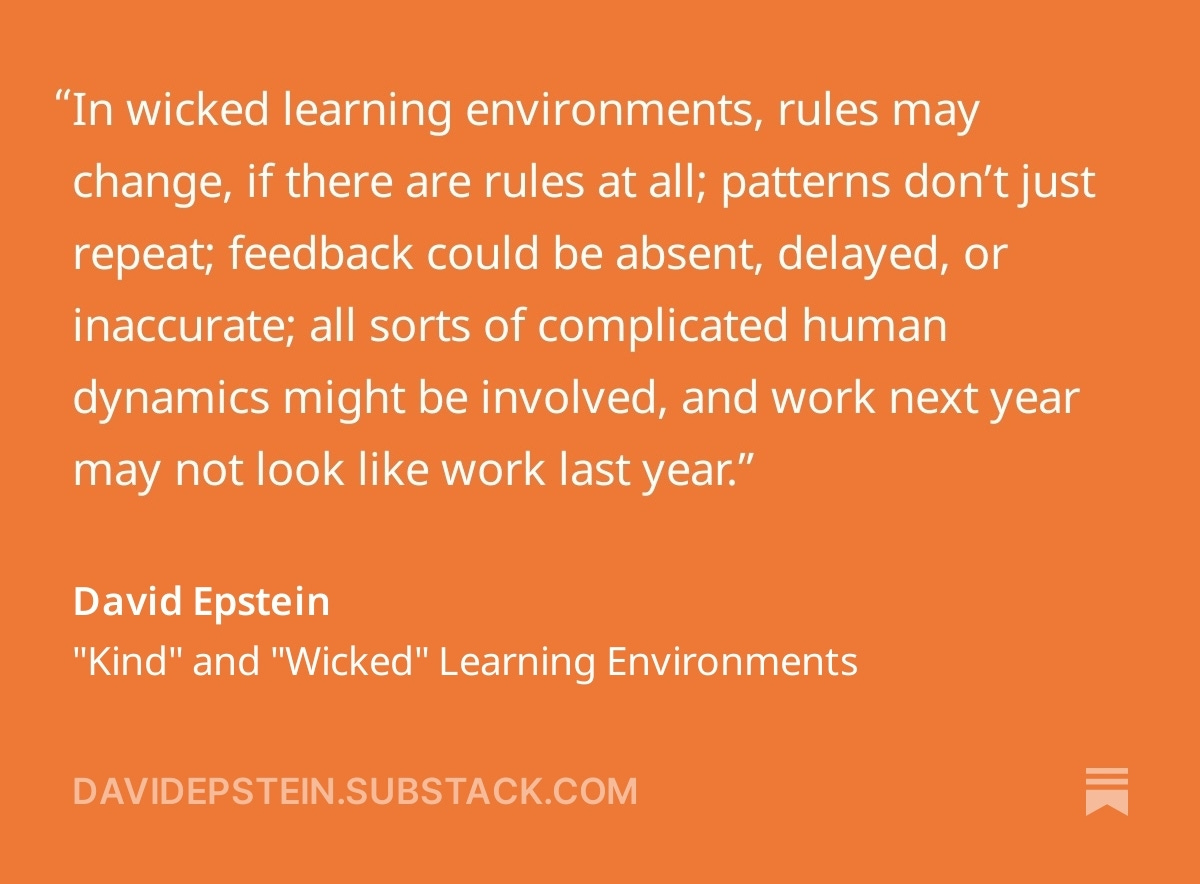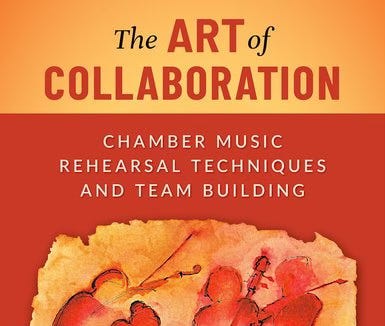Welcome to The Art of Rehearsal — Each month, we bring professional musicians, music educators, and the best new research into conversation to enliven real rehearsals—from the Emerald City Youth Orchestra to the Shiz University Chamber Singers…
Newcomers can check out this overview and previous issues: August • September.
It’s been a particularly spooky October for me. Erin and I adopted little Elphaba Rose (picture at bottom). In honor of the season, I also re-read Gregory Maguire’s Wicked: The Life and Times of the Wicked Witch of the West. I loved this little passage:
“Once inside the forest, the travelers could not see the hills. Everything smelled of ferns and fiddle-greens. And on the shores of a small lake stood a dead tree. It harbored a community of bees, at their work of chamber music and honey.”
—Gregory Maguire: Wicked
Contents: Try This • Wicked Through and Through • The Art of Chamber Music • Rehearsal Roundup • Face the Music
Try This
Tactics and techniques to try in your next rehearsal.
Let’s get tuned up. After making sure that your ensemble is full of thoroughly in-tune instruments and tuned-in musicians, we want to monitor intonation in our repertoire.1 Here are three basic tactics to keep in mind when trying to ground an ensemble in the tonality of a piece or passage.
Tactic 1: when tuning a root position chord in tonal music, begin with the root, then add the fifth, then the third, and finally add any additional pitches (e.g. 7th, 9th etc.)
Tactic 2: when trying to improve overall intonation in a passage, start by tuning the chords in the cadence (e.g. V • I).
Tactic 3: when tuning a cadence, it may be beneficial to work backwards from the stability of the tonic to the instability of the dominant chord with the tension of its tritone, before running the cadence forward. Tune I, then V, then V to I.
— Excerpted/adapted from one of this month’s new essays from me: “Tactics and Techniques, Part 1: Tactics.” More over there. Several of the resources mentioned below utilize and or teach these methods.
But don’t take it from me. From the Minnesota Orchestra: The ABCs of Tuning.
Wicked Through and Through
The term “Wicked” actually has an interesting history, one that’s relevant here: Psychologist Robin Hogarth popularized the use of the term “Wicked Learning Environments” to describe professions and situations where time is short and feedback on decision making is delayed, absent, or noisy. This is already dangerously close to a description of the rehearsal process—though there’s much more.
wrote a great summary of the idea here and borrows heavily from the idea in his outstanding 2019 book, Range.2The message: in sophisticated environments like a music rehearsal, our job is to educate our intuition with good information sourced from real-life situations, solid research, and experts with relevant experience. This is what our gut will later call upon, even if we don’t particularly realize it.
In musical terms, this includes observing rehearsals and asking for advice from experts and colleagues in a specific, structured way.
More: For psychology-based connections to rehearsal, see “Intuition on the Podium” from me, or read the thoughts of many first rate conductors in “Intuition: The Missing Piece?”
The Art of Chamber Music
Dorianne Cotter-Lockard and Annie Fullard with the Cavani String Quartet continue their decade-long collaboration on collaboration. They have produced a promising new book which seems certain to be full of great ideas for chamber music gurus and much of it useful for conductors and ensemble musicians. The Art of Collaboration is due in early 2025, but you can find Cotter-Lockard’s related dissertation here and a quick, fun little video demonstration on their book website. And here’s the publisher page for the book where you can pre-order.
And: Here’s a Cavani clinic with a very good high school string quartet working on the Ravel Quartet. More Cavani, below.
A different angle: Aslaug Louise Slette in the British Journal of Music Education: “Negotiating musical problem-solving in ensemble rehearsals” recently wrote about how students negotiate and adopt different roles in unconducted chamber ensembles.
Rehearsal Roundup
Recent Essays and Discoveries
The Ying Quartet at Bowdoin put together a guide to rehearsal collaboration. Violist David Ying emphasizes that it’s possible that, at least equal to tone or tuning, it’s important to be a decent person when you sit down to play with others. I love Cavani’s LBAD (Live, Breathe and Die) exercise which seems geared towards this pro-social approach. See their concise Art of Collaboration handout here.
Listen up: Cavani Violinist Annie Fullard (same as above) speaks with Davina Shum about the collaborative skills of the chamber musician on the Strad Podcast. (This is where I learned about the book.)
Go Deep: Violinist, conductor, and music education scholar Rebecca Roesler has been doing extraordinary work in exploring what exactly is going on in a string quartet rehearsal. Her latest paper, “Autonomous 4? Learners’ Collaborative Problem Solving in Chamber Music Rehearsals With and Without a Coach” just dropped in the ASTA String Research Journal. What happens when the coach leaves the room? Check it out here. (Paywall, but the link should get it to you for free - let me know if it doesn’t work!)
More from me:
Part 3 is coming soon…
You can find them all at Conductor’s Notebook. Or subscribe via RSS.
Angela Harman runs a great blog called Orchestra Classroom. New over there:
“Games to reinforce rehearsal procedures and playing skills”
Games are a form of simulation, which is one of the key techniques that Gary Klein recommends again and again when trying to help hone intuition in any skill. Rehearsal itself is a performance simulation, so the two go hand in hand. Great teachers do this, but the best professional conductors also seem to bring a spirit of play to rehearsal. It’s not brain surgery!
Face the Music
Rehearsal video from around the web.
The Emerson Quartet rehearses Shostakovich and Bartok and talk about their rehearsal process. “The Music’s the Boss.”
Or for Beethoven, see the Jasper Quartet rehearse using a fingerboard-only tactic. (Shadow bow, sans bow? Ha.)
“Got anything besides strings?” Fair enough.
Here’s the Silpakorn Faculty Wind Quintet playing a super fun Hungarian Dance by Ferenc Farkas. They don’t really talk much but this is just pure fun.
Or check out Linda Kaastra’s deep exploration of the specific comments of a flute duo in rehearsal.
Here’s a great article on percussion chamber music rehearsal techniques by
: “Oblique Rehearsal Strategies: Shaking up your group rehearsal process”
Thanks again — until next time.
Before you go:
There are several ways to join the conversation - I look forward to hearing from you.
I need your help. Here’s this month’s 1-minute survey. I’d be grateful for your feedback while it’s still fresh. Thank you!
Bonus: Meet Elphie
As promised, more photos of our newest family member. Happy Halloween!




See also from Max Rudolf, p. 278. “The concertmaster usually supervises tuning, which should be completed before the rehearsal begins, and must never be permitted to degenerate to a perfunctory routine.” Translation: it’s ok to tactfully and gracefully remind even skilled musicians about appropriate tuning procedures. Remember: the most conscientious musicians in the room will be grateful that it did not go unsaid and unchecked! Larry Rachleff was a well-known stickler for initial tuning, with a bulldog-like tenacity for obtaining a coherent ensemble sound. Be like Larry.
Highly recommend this book as an organizing principle for thriving in the music world. I met David last spring - he’s a huge music fan - it shines through in Range.







Cute kitty!
Bumpy ride personally but my 4 elementary orchestras are larger than they have been in years! You?